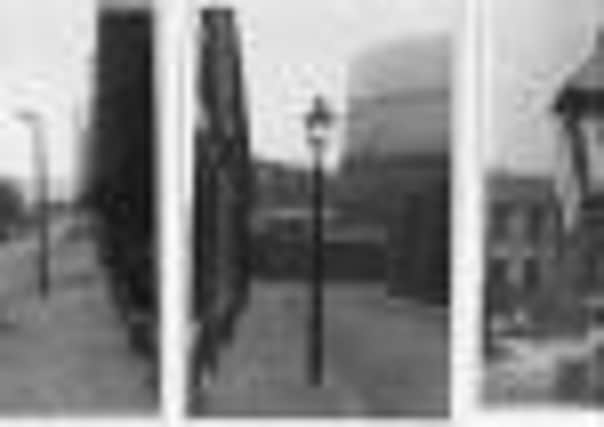PEEK INTO PAST: Burnley’s history in street lamps


You will notice I have published three photos. They have come from an officer of Burnley Council who thought I would be interested in seeing a large number of images of – guess what? Street lamps! Seriously, though, I would like to thank him for saving this collection of Burnley images which otherwise would have disappeared like so many others.
I have to say that, until I acquired these photos, I had not really given much thought to street lighting. We take it for granted forgetting just what a boon street lighting was to our ancestors.
Advertisement
Hide AdAdvertisement
Hide AdIt remains so for us but there was a time, before the invention of coal gas, when the lighting of streets was problematic. A number of alternatives were tried including rushes dipped in oil, small oil laps and braziers filled with burning coals. All of these were expensive and labour intensive but there are accounts of each of them being used in our part of the world in the 18th Century.
It appears these early forms of street lighting, at least in our part of the world, were not provided for everyone and they were clearly not used every day. It was expected people would be in bed before 8 p.m. and would rise at, or before, dawn. In these circumstances there was no need for street lighting but, occasionally, it was necessary to light the way of individuals about their legitimate business at night.
There is an account, in one of the local newspapers, of a celebration in Whalley. This took place about 200 years ago but what interested me was that the organisers of the event thought special lighting for their quests, as they arrived at, and departed from, the place where the event was held should be provided. To ensure this happened a small army of “lights men” were employed to keep what must have been small oil-filled lamps burning.
I have often wondered what such lighting looked like when in use and how effective it might have been. BBC productions of classic novels, set in the late 18th or early 19th Century, have never satisfactorily resolved this problem for me but I suspect that, particularly in inclement weather, lights like these were not all that satisfactory.
Advertisement
Hide AdAdvertisement
Hide AdIt was widely believed that gas street lighting, when it was introduced, perhaps 230 years ago, had a considerable impact on reducing street crime. This may have been the case in towns but in the countryside, where there were few gas works, it may have been less important. There the work of the “owlers”, footpads who robbed the intrepid under the cover of darkness, continued and they are remembered in places like Todmorden and Littleborough where there are street names which derive from their activities.
The council official who gave me these pictures realised that, though the photos would be of interest to Burnleyites of a certain age because of the lamps themselves, the pictures are also of street of scenes which have long since gone. Consider these photos and see if you can work out where they were taken. Then read on.
I have numbered the pictures 1, 2 and 3 but I am afraid I cannot tell you as much as I would like about each image and would be grateful if you can help me out with details.
The first image is of Ship Alley which was off Parker Lane and near Burnley’s first gas works which was opened in 1823. I think the building in the foreground is the Mission Chapel in Parker Lane which stood opposite the bottom of Saunder Bank. If that is the case, the building on the left will be the former school attached to St Paul’s CE Church which was in Saunder Bank itself. At the top of the street you can see part of Brunswick Chapel and, below that, part of Saunder Bank Iron Works. You might be able to spot the dome on Burnley Town Hall, just to the right of the glass lantern of the ornate gas lamp.
Advertisement
Hide AdAdvertisement
Hide AdI thought image number two was a little easier to identify but, on second thoughts, I am not sure. The clues are the viaduct and large gas holder, not gasometer as some call it. On the back of the photo the following is recorded, “Ashfield Road and junction of Print Street” but I don’t think this can be the case as the gas holder and viaduct are not correctly located in relation to the street. More likely is that this image is taken from Warwick Street at its junction with Royal Road.
The third picture shows two street lamps, an old gas lamp in the foreground with a more modern concrete sodium light in the middle of the picture. Notice another gas lamp in the background and beyond it another gas holder. Unlike the holder in the second picture this one is still with us and is sited in Oswald Street.
We are in New Hall Street, Daneshouse. I think the terrace, extreme right, is the one between Grey Street and Abel Street and the photo is taken looking in the direction of New Hall Bridge which carries the bottom end of the street above the canal.
I hope you have enjoyed my little diversion this week. It has taken us into parts of Burnley we do not normally reach and I have certainly felt up to the challenge of working out where the pictures were taken. However, I am not certain I am right in all respects. Are you up to correcting me if I am wrong?